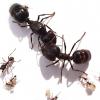Edited by Kennethlwr, August 11 2020 - 7:21 AM.
- Formiculture.com
- Forums
- Gallery
- Members
- Member Map
- Chat

Edited by Kennethlwr, August 11 2020 - 7:21 AM.
Awesome.
Ants I have: Tapinoma sessile(2 queen colony). RED MORPH Camponotus neacticus(now has pupae!), Tetramorium immigrans (x3), Aphaenogaster sp, Temnothorax sp, Brachymyrmex sp. possibly infertile ![]() , Ponera pennsylvanica, and Pheidole morrisi!
, Ponera pennsylvanica, and Pheidole morrisi! ![]()
Other insects: Polistes sp. Queen
Ants I need: Pheidole sp., Trachymyrmex sp., Crematogaster cerasi , Dorymyrmex sp. Most wanted: Pheidole morrisii
Congrats!
Ants I have: Tapinoma sessile(2 queen colony). RED MORPH Camponotus neacticus(now has pupae!), Tetramorium immigrans (x3), Aphaenogaster sp, Temnothorax sp, Brachymyrmex sp. possibly infertile ![]() , Ponera pennsylvanica, and Pheidole morrisi!
, Ponera pennsylvanica, and Pheidole morrisi! ![]()
Other insects: Polistes sp. Queen
Ants I need: Pheidole sp., Trachymyrmex sp., Crematogaster cerasi , Dorymyrmex sp. Most wanted: Pheidole morrisii
Nice looking colony! That large larva in the back is going to be a big major!
My Main Journal | My Neivamyrmex Journal | My Ant Adoption | My YouTube
Join the TennesseeAnts Discord Server! https://discord.gg/JbKwPgs
There is probably gonna be even bigger majors in the future!
Ants I have: Tapinoma sessile(2 queen colony). RED MORPH Camponotus neacticus(now has pupae!), Tetramorium immigrans (x3), Aphaenogaster sp, Temnothorax sp, Brachymyrmex sp. possibly infertile ![]() , Ponera pennsylvanica, and Pheidole morrisi!
, Ponera pennsylvanica, and Pheidole morrisi! ![]()
Other insects: Polistes sp. Queen
Ants I need: Pheidole sp., Trachymyrmex sp., Crematogaster cerasi , Dorymyrmex sp. Most wanted: Pheidole morrisii
There is probably gonna be even bigger majors in the future!
I know! But imagine stumbling on a founding chamber of this sp. and your like some tiny worker ant from some small Pheidole species or whatever. (Pretend you can see for this) So you look down this huge hole, thinking it could be some abandoned nest or something , you go in, and you see this juggernaut of a queen. Your choice is run for your life, or be - s l i c e d -
Edited by TechAnt, August 19 2020 - 8:20 AM.
*sigh* "Super majors" don't exist in carebara, at least not the marauding species. It's just varying sizes in the major caste. True "super majors" are found in trimorphic species, with distinct caste differences. It's good to see they're doing well. Keep in mind the major you spotted is not even close to a full size major. Those would be slightly short than the queen herself.
*sigh* "Super majors" don't exist in carebara, at least not the marauding species. It's just varying sizes in the major caste. True "super majors" are found in trimorphic species, with distinct caste differences. It's good to see they're doing well. Keep in mind the major you spotted is not even close to a full size major. Those would be slightly short than the queen herself.
I thought recently C. diversa and C. affinis were classified as having actual supermajors? And trust me, I've been preaching about the overuse of "super major" for forever now. But I feel like I remember some study confirming that C. diversa do have actual supermajors. Correct me if I'm wrong here.
I like leafcutter ants. Watch The Ultimate Guide to Fungus Growing Ants:
https://youtu.be/VBH...4GkxujxMETFPt8U
This video took like over 100 hours of work, you should for sure watch it.
*sigh* "Super majors" don't exist in carebara, at least not the marauding species. It's just varying sizes in the major caste. True "super majors" are found in trimorphic species, with distinct caste differences. It's good to see they're doing well. Keep in mind the major you spotted is not even close to a full size major. Those would be slightly short than the queen herself.
I thought recently C. diversa and C. affinis were classified as having actual supermajors? And trust me, I've been preaching about the overuse of "super major" for forever now. But I feel like I remember some study confirming that C. diversa do have actual supermajors. Correct me if I'm wrong here.
I thought that too..
I havent heard of it, suppose its possible. Seems to break the definition of a distinct caste though.
Well.. I think the term majors and Super majors are the common terms used by people to describe the difference in worker’s sizes, especially for Carebara D as the size is very distinct
The size is distinct, but there's no clear border between the 2. Which is why it's not considered an actual distinct caste outside of major, at least to my knowledge.
Edited by Kennethlwr, August 22 2020 - 12:42 AM.
0 members, 1 guests, 0 anonymous users